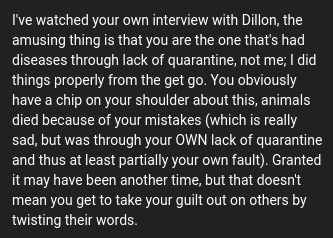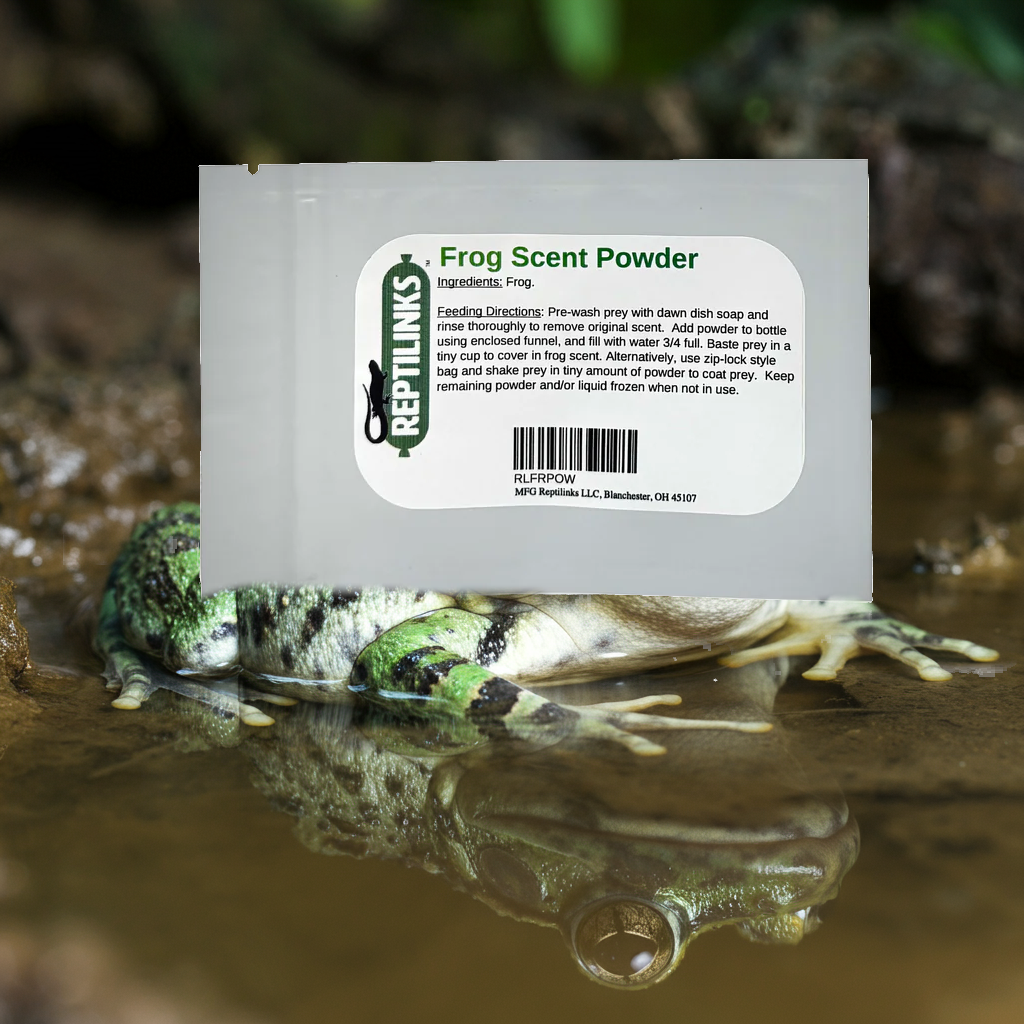ELI5 is a common internet acronym for “Explain like I’m 5”. This request to simplify convoluted or complicated topics can be especially helpful when people have surrounded themselves with irrelevant links and data to a specific topic. Focusing directly on the simple concepts of the topic at hand makes the discussion clearer.
Why This Was Written
In response to YouTube comments, the previous article, and a YouTube video explaining the differences in Roman and Liam’s approach to disease prevention even more people denied fundamental disease control principles. Not in a very nice way, of course — this was usually done by slinging irrelevant links or calling me a liar. Liam will even accuse other people of stretching the truth while he fabricates his own lies.

In response to being asked if Liam would begin a testing regimen he deferred to blaming other people. The quote above by Liam Sinclair is completely untrue. In the comment he intentionally attempts to blame me for a story detailing how animals were delivered to me with the disease.
No animals present died or were injured by animals I received that had nidovirus. This is completely invented by Liam Sinclair to attempt a verbal assault based on his own lies.
I did speak of animals that had nidovirus possibly transferred to them prior to 2015 — everyone prior to 2015 happened to also be as confident as Liam that they were doing everything correctly. Like a true sociopath, Liam has taken to falsely blaming people for animal deaths instead of understanding the importance of promoting testing as a part of disease control for welfare regarding these animals.
We’re going to explain it to a five year old in hopes that the topic of disease control can be treated with the appropriate and clear attention it deserves.
Viral Disease Prevention, For a 5 Year Old
Viruses are very small and must be transferred from one organism to another where they reproduce within the organism. Viruses do not grow without a host.
In modern times we have developed many ways to prevent transmission of viruses from one host to another. Hygiene, the act of eradicating things that can make us sick by keeping our environment clean, can prevent viral transmission. Quarantine, or keeping away from others if we may be sick, is another great way to prevent transmission. Diagnostics, or testing, can be used to identify which virus is affecting us so we can take appropriate steps. Being able to vaccinate hosts is ideal but vaccines can be difficult to develop.
There are many things that may prevent disease but we know that the 4 methods above have effects that are measured and known to be effective when it comes to viruses. They are also effective against many other things that can cause us disease.
Why This Needs To Be Explained
When Liam Sinclair says “viral infections like respiratory issues … commonly caused by incorrect husbandry” he is establishing a very anti-science rhetoric. Viral infections are not caused by incorrect husbandry — they’re caused by viruses. Environmental conditions are not the cause of infections. Viruses are the cause of infections.
Environmental conditions, diet, and existing health can certainly contribute to factors that lead to whether or not being exposed to a virus results in a viral infection that leads to disease. Appropriate environmental conditions may reduce transmissions of the virus but ultimately are not as broadly effective as modern disease control strategies: diagnostics (testing), quarantine, and hygiene.
Anyone practicing medicine that suggests otherwise would not be licensed for long. This is anti-science rhetoric in the age of anti-science rhetoric.
One of the sources of information that were used explicitly by Roman Muryn was Dr. John Campbell. Dr. John Campbell creates YouTube videos and has quite a library talking about disease control topics. If you were to watch these videos you’ll find him speaking about diagnostics, quarantine, and hygiene. Roman references the personal practices of Dr. Fauci — who also advocates for testing, hygiene, and quarantine first. The body of human medicine and veterinary medicine advocates for diagnostics, quarantine, and hygiene in disease prevention. In their fervor for creating UV topics they have completely skipped the very obvious information directly from their own sources that needs attention.
Humans without vitamin D deficiency can still become infected by viruses and develop disease. Reptiles independent of UV exposure can still become infected by viruses and develop disease. The complete omission of any topics related to the practice of disease prevention by both of these individuals makes it very clear they are not concerned with disease prevention.
Any veterinarian that Roman or Liam would like to get a statement from with their name acting in the capacity of someone practicing medicine would first speak on these subjects before suggesting that UV is a replacement for these methods. Anyone practicing medicine that suggests otherwise would not be licensed for long. This is anti-science rhetoric in the age of anti-science rhetoric.
Vitamin D, especially if deficient in the vitamin, has been linked to reducing the duration and effects of some respiratory disease including viral infections. The studies offered were conducted on people already infected — irrelevant to prevention. The method of treatment was bolus delivery of vitamin D — not from a UV lamp or by sunlight. We do not know vitamin D’s role in preventing disease or its effectiveness even if Liam and Roman offer naive and simple statements of how “simple” they believe vitamin D to be.
The most pervasive viral respiratory disease for reptiles is nidovirus as it is pervasive across python collections. Similar viruses have also been found in veiled chameleons. There is no indication that these animals will ever recover from this disease — even if exposed to UV lamps the systemic damage of the virus (not just the lungs) still persists. As a disease prevention, cure, or “mitigation” the entire concept of UV light pitted against a disease like nidovirus is completely superseded by diagnostics (testing) — it is entirely irrelevant.
Speculation about preventing disease through UV exposure, even if proven true, will never be equivalent to testing, quarantine, and hygiene. This is not the same as covid19 — we control the environments for these animals, their exposure to other animals, and their induction into collections with other animals.
We know the mechanisms and effectiveness of diagnostics (testing), quarantine, and hygiene. Long before covid19 we were dealing with coronaviruses in humans, birds, and reptiles. Management of these diseases involved scientific approaches in diagnostics, quarantine, and hygiene.
Both Liam and Roman live in countries with access to testing. It is relatively cheap and in some cases can be performed right at home. There is absolutely no excuse for mishandling information on viral disease in these animals in such a hamhanded manner.
Clarity
Promote testing of animals like we do with other pets in the industry. Horses are transferred after veterinary inspections including diagnostics. Birds are tested for coronaviruses before transfer. Liam and Roman want to give snakes a lamp and skip diagnostics, testing, and quarantine. This is wrong.
I understand that this article is not going to persuade consumers of disinformation around disease management in captive pet reptiles but I do hope it can help shift the conversation.





Comments